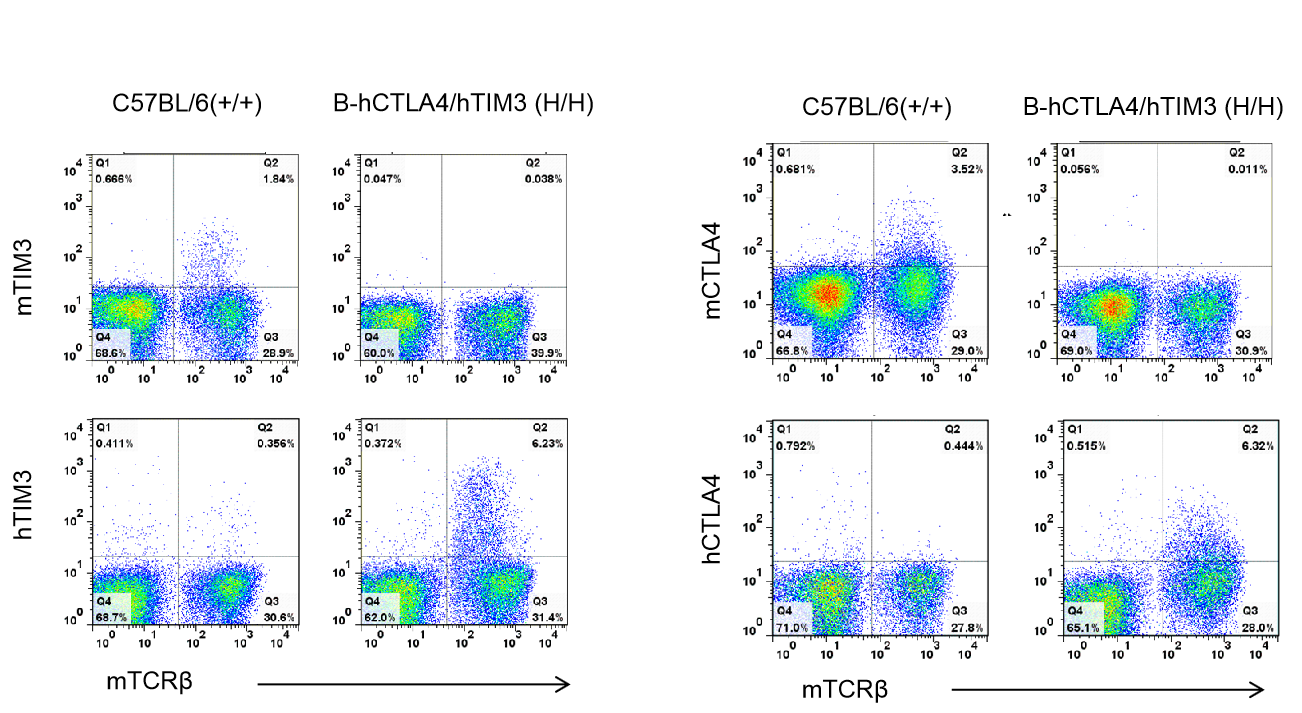


C57BL/6-Ctla4tm1(CTLA4)Bcgen Havcr2tm1(HAVCR2)Bcgen/Bcgen • 120530
| Product name | B-hCTLA4/hTIM3 mice |
|---|---|
| Catalog number | 120530 |
| Strain name | C57BL/6-Ctla4tm1(CTLA4)Bcgen Havcr2tm1(HAVCR2)Bcgen/Bcgen |
| Strain background | C57BL/6 |
| NCBI gene ID | 12477,171285 |
| Aliases | CTLA4 (cytotoxic T-lymphocyte-associated protein 4)HAVCR2 (hepatitis A virus cellular receptor 2) |
Gene targeting strategy of B-hCTLA4/hTIM3 mice. The targeting strategy of B-hCTLA4 mice is to replace the exon 2 of the mouse Ctla4 gene that encodes the extracellular domain with human CTLA4 exon 2. The targeting strategy of B-hTIM3 mice is to replace the exon 2 of the mouse Tim3 gene that encodes the extracellular domain with human TIM3 exon 2. The B-hCTLA4/hTIM3 double knock-in model, developed by breeding the B-hCTLA4 mice and the B-hTIM3 mice, has a functional mouse immune system.

Strain specific TIM3 and CTLA4 expression analysis in homozygous B-hCTLA4/hTIM3 mice by flow cytometry. Splenocytes were collected from WT and homozygous B-hCTLA4/hTIM3 (H/H) mice stimulated with anti-CD3ε in vivo, and analyzed by flow cytometry with species-specific anti-TIM3 and anti-CTLA4 antibody. Mouse TIM3 and CTLA4 were detectable in WT mice. Human TIM3 amd CTLA4 were exclusively detectable in homozygous B-hCTLA4/hTIM3 but not WT mice.